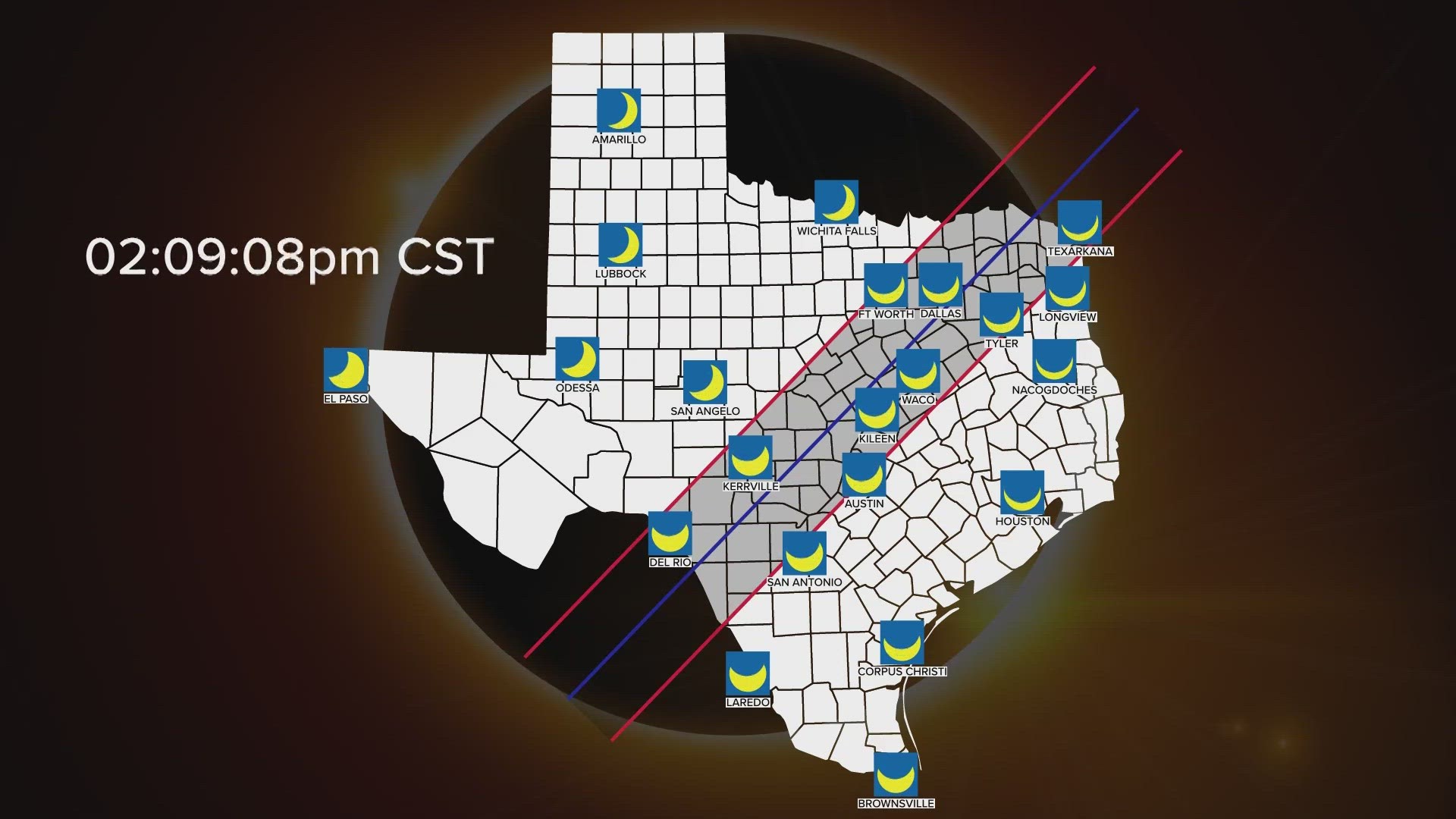DALLAS — The April 8 total solar eclipse is expected to dramatically reduce solar power production in the state as it passes over Texas. So, what should Texans expect, and how is the Electric Reliability Council of Texas (ERCOT), the state’s power grid operator, preparing?
The moon will move between the sun and the Earth on April 8, casting a shadow that moves across the state from the southwest to the northeast and impacting solar power production in the region between 12:10 p.m. and 3:10 p.m.
Forecasts published by ERCOT on April 7 suggest solar generation on the day of the eclipse could drop from 99.2% around noon to about 7.6% by about 1:40 p.m.
“ERCOT is working on forecasting models to reflect solar generation on the grid during the eclipse. ERCOT does not expect any grid reliability concerns during the eclipse,” ERCOT said in a statement to WFAA. “ERCOT will use all available tools to maintain grid reliability and will continue to monitor conditions.”
More than 26 million people rely on ERCOT for electricity, or about 90% of the state’s electric load, and solar energy contributed about 6% of energy generation in 2022, according to ERCOT.
Extreme weather conditions have previously strained the Texas power grid. ERCOT recently issued appeals for residents to conserve energy during peak times during a freeze in January.
The path of totality over North America on April 8 will range from 108 to 122 miles wide (up from 62 to 71 miles wide during the 2017 solar eclipse), according to NASA.
The path of totality in North America crosses from Mexico into Texas, up to Maine, and exits over Canada.
An estimated 31.6 million people live in the path of totality this year, compared to 12 million during the 2017 eclipse.
As the eclipse enters Texas, totality will last about 4 minutes, and 26 seconds at the center of the eclipse’s path, NASA says.

